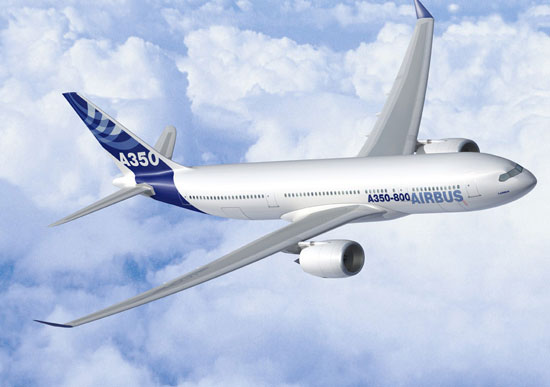Aircraft can change the weather
When the plane flies through and creates holes in the clouds, it can change the weather around the airport areas located in high latitudes, even causing rain and snow, according to a study. new research published in Science magazine.
Based on data collected from seven airports located in high latitude areas, scientists found that the planes created holes in the clouds with a diameter of several tens of meters or more, even expand tens of kilometers within a few hours.
New Scientist page quoted Andy Heymsfield - a research team member working at the US National Center for Atmospheric Research in Boulder, Colorado, USA said: ' This is a mystery'.

To clarify the issue, Mr. Heymsfield and his colleagues used Meteorological Satellite (GOES) in conjunction with the use of the Weather Research and Forecasting (WRF) computer model to track 92 holes. clouds in the sky in Texas for 4 hours on January 29, 2007, with the main agents causing them are aircraft, including large passenger aircraft and military aircraft.
The team found that, under normal conditions, clouds have temperatures ranging from 0 to 40 degrees Celsius and contain droplets of super-cold ' hanging ' liquid suspended on them. These supercooled liquid droplets persist for a long time without any impact.
However, an aircraft equipped with jet engines or propellers when flying through the sky will cool the clouds. At this time, the temperature in the clouds is reduced, ranging from - 10 to 20 degrees C.
The process of cooling these clouds is more than enough to activate, converging supercooled droplets and forming ice crystals. They grow heavier and heavier, causing rain or snow.
Scientists say that such holes will cause more snowfall during the winter months, and this sometimes leads to a flight delay. However, they believe that these holes will not have a big impact on climate change.
Below is a picture of the holes created by trans-plane aircraft and recently captured by scientists on Live Science.

Hole in the cloud in Linz, Austria, taken in 2008.

Cloud hole in Mobile City, Alabama, USA, taken in 2003

Hole in the cloud in southern Louisiana, USA, taken on January 29, 2007

Cloud hole in Colorado, USA, taken in 2007

On January 29, 2007, the satellite of the US Aerospace Agency (NASA) captured cloud holes in the sky in Oklahoma, Arkansas, Louisiana and Texas, USA.
- AirAsia aircraft can
- First flight laboratory for weather forecast
- How is the aircraft protected against lightning?
- This multimodal plane will forever change the way we travel
- New weather technologies help keep the aircraft safe during thunderstorms
- Climate change has impacted throughout Vietnam
- On this V-shaped plane, passengers sit on the wing
- Viettel: About to launch the first unmanned aircraft
- US military aircraft will have sensors 'see through the weather'
- Why is the weather forecast often wrong?
- The harsh summers await humanity
- Controlling the weather as you want?
 The truth about the mysterious red-haired giant at Lovelock Cave
The truth about the mysterious red-haired giant at Lovelock Cave Inunaki Tunnel: The haunted road leading into Japan's 'village of death'
Inunaki Tunnel: The haunted road leading into Japan's 'village of death' The mystery of the phenomenon of human reflection before dying
The mystery of the phenomenon of human reflection before dying 6 mysterious phenomena, although science has been developed for a long time, still cannot be answered
6 mysterious phenomena, although science has been developed for a long time, still cannot be answered